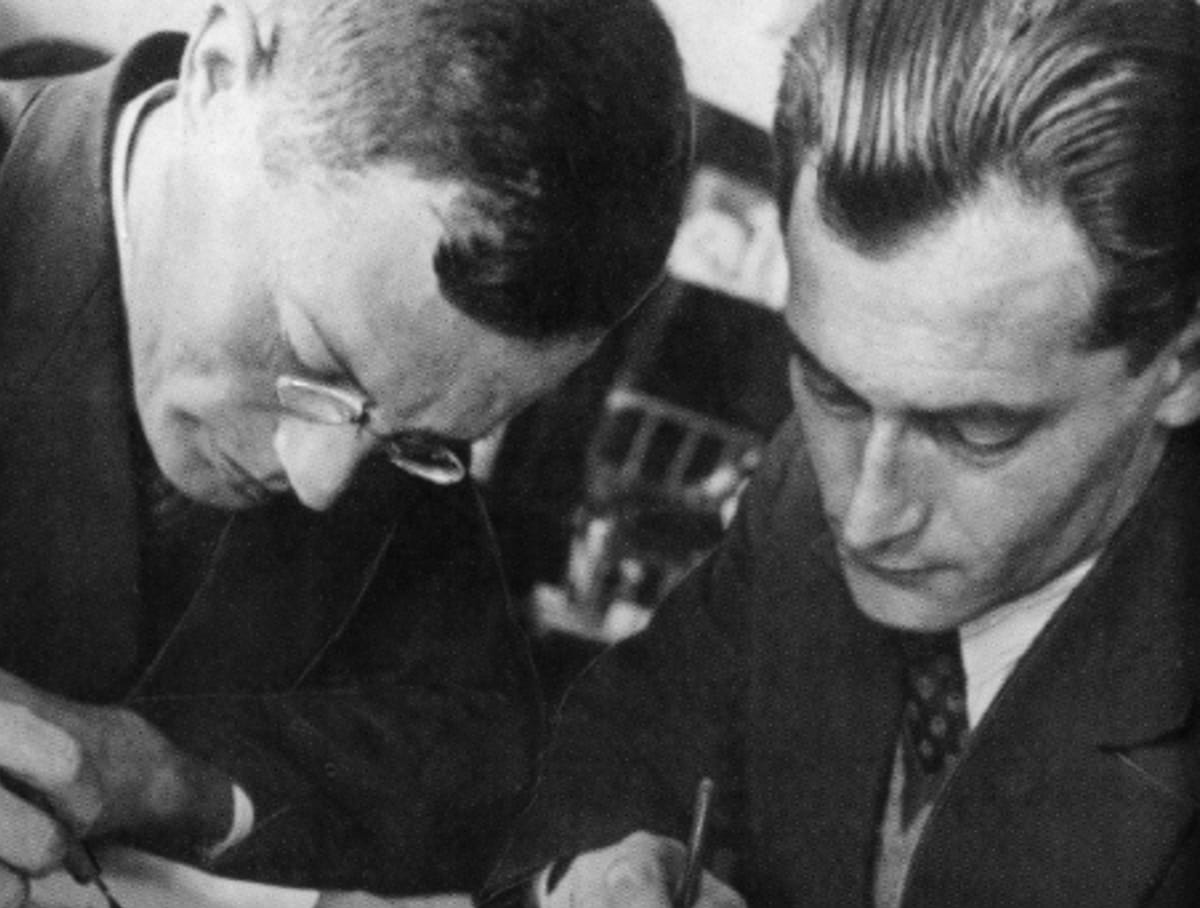In blogs and articles you can sometimes find a statement that the novel “The Twelve Chairs” was written not by Ilf and Petrov, but by Mikhail Bulgakov. We decided to figure out what this statement is based on and whether it is true.
The theory about Bulgakov as the author of “The Twelve Chairs” can be found in a wide variety of sources: in the newspaper “Literary Russia", in the writer's blogs Dmitry Galkovsky and a field commander sentenced by a court in The Hague Igor Strelkov. Relatively recently, in February 2023 years old, a text on this topic was reposted on LiveJournal by a State Duma deputy Oleg Matveychev. All authors of the articles claim that Bulgakov is the true creator of the novel. Allegedly, he agreed to give away his work, as he was faced with refusal to publish his other books. And Ilf and Petrov are supposedly just a screen, little-known authors behind whom a truly great writer was hiding. This theory is also popular on YouTube: one of the videosov on the topic of Bulgakov's authorship dialed 217,000 views, there are mentions Here And Here.
"Bulgakov's" theory
The first work that examines in detail the possible authorship of Bulgakov is Irina Amlinsky’s book published in Berlin “12 chairs from Mikhail Bulgakov"(2013). The author questioned the traditional attribution of the famous novel. In her opinion, Bulgakov’s authorship is proven by numerous textual coincidences and allusions contained in “The Twelve Chairs.” For example, Amlinski claims that the prototype of Ostap Bender is the swindler Ametistov from Bulgakov’s play “Zoyka’s Apartment.” And the former nobleman Obolyaninov from the same play is the prototype of Vorobyaninov from The Twelve Chairs. This is the first time this resemblance described Alexander Levin in an article from 2011.
Irina Amlinsky, in turn, argues that Ilf and Petrov could not have been familiar with the text of “Zoyka’s Apartment,” which was published in Russian only in 1969, and the first translation appeared in 1929, two years after the writing of “The Twelve Chairs.” The argument that the theatrical premiere of “Zoyka’s Apartment” took place in October 1926, the researcher dismisses it, insisting that Ilf and Petrov did not go to the theater.
Irina Amlinski’s main argument is the coincidence of names and speech patterns. The author compares the text (including draft versions) of “The Master and Margarita” with “The Twelve Chairs”. According to her theory, Matvey Levi is equal to Ippolit Matveyevich Vorobyaninov, and Vorobyaninov’s mother-in-law Claudia Petrovna is equal to Pontius Pilate. In addition, the author of the work claims, there are no drafts of The Twelve Chairs, only a “white autograph of the novel.”
Authorship of Ilf and Petrov
In a conversation with Verified, Mikhail Odessky, a researcher of the works of Ilf and Petrov, the author of comments (together with David Feldman) on the full author’s text of “The Twelve Chairs,” called the theory about Bulgakov’s authorship “puzzling.” According to him, the history of the creation of the novel has been well studied and experts have no doubt about the authorship of Ilf and Petrov.
First of all, notes Mikhail Odessky, in the archive there is a manuscript of “The Twelve Chairs”, which used when compiling a complete edition of the novel. This manuscript, with copyright edits, belongs to Evgeny Kataev (aka Evgeny Petrov, co-author of Ilya Ilf). In addition, there are two typewritten copies signed by the authors - Ilf and Petrov. Finally, the first publication of “Twelve Chairs” in the magazine “Thirty days"was released in a truncated form. In subsequent editions, excerpts from the manuscript were included in the text. There is nothing strange in the absence of drafts for a manuscript, explains Mikhail Odessky: there is no reason to keep rough drafts if there is a manuscript with copyright edits. Keeping drafts with all possible variations is an individual trait of individual writers, it is not a generally accepted rule.
The second argument is the well-known history of the creation of the novel, which was not disputed by either contemporaries, or Bulgakov, or researchers of creativity, on the one hand, Bulgakov, on the other, Ilf and Petrov. Writer Valentin Kataev, the elder brother of Evgeny Kataev (Petrov), tells this story in his memoirs "My diamond crown" According to Kataev Sr., he, following the example of Alexander Dumas the Father, decided to take advantage of the work of “literary blacks,” that is, those who would embody his plans on paper. As such assistants, he chose “his friend and his brother,” that is, Ilya Ilf and Evgeny Kataev. He gave them the idea to write a novel about diamonds hidden in a furniture set.
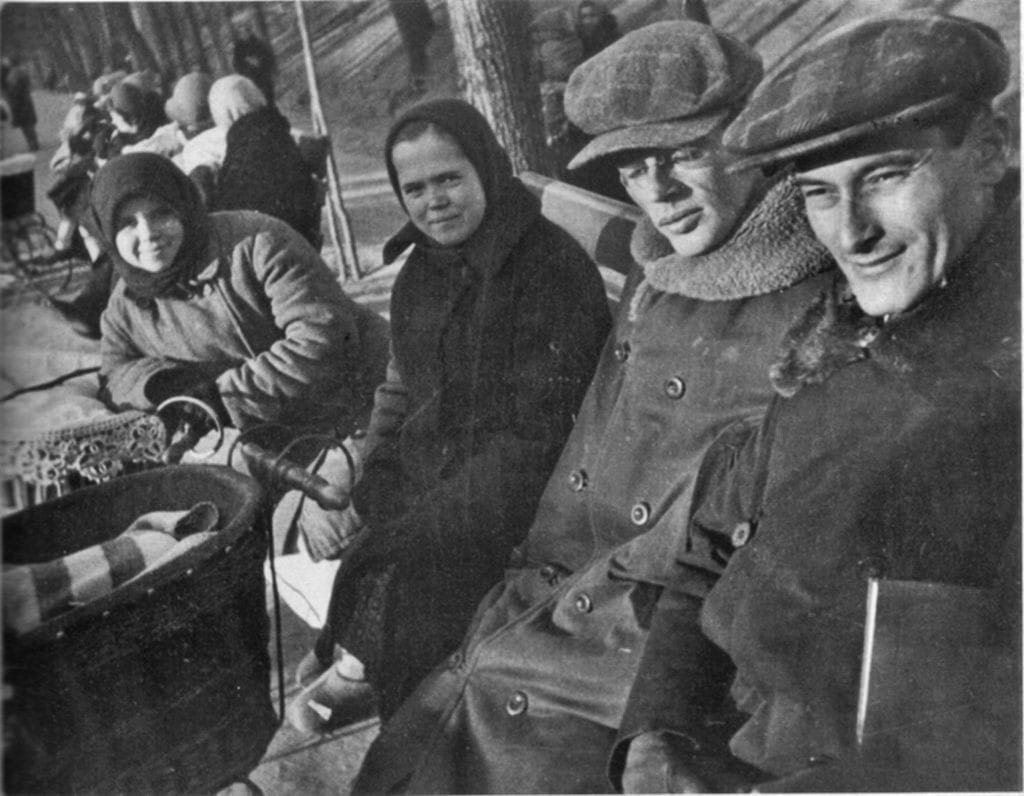
Further, Valentin Kataev describes the development of events as follows: “I had barely appeared in cold, rainy Moscow when my co-authors appeared before me. With dignity, and even a little dryly, they informed me that they had already written more than six printed sheets. One of them took a neat manuscript out of the folder, and the other began to read it aloud. Within ten minutes it became clear to me that my slaves had fulfilled all the simple plot moves assigned to them and perfectly portrayed the portrait of Vorobyaninov suggested by me, but, in addition, they introduced a completely new, magnificent character they had invented - Ostap Bender, whose name has now become a household name, like, for example, Nozdryov. After this, Kataev Sr. said: “That’s it, brothers. From now on, both of you are the only author of the future novel. I'm leaving." At the same time, the first and subsequent editions invariably included a dedication to Valentin Kataev. It seems sets out this story and Evgeny Kataev (Petrov).
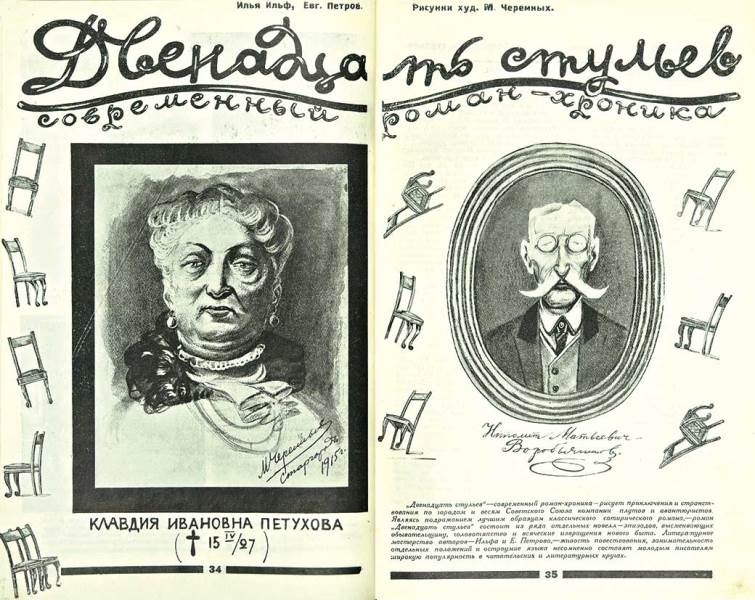
The third argument is the literary and social environment in which the novel was created. A friendly company of writers called “Collective of Poets”, at the center of which was Valentin Kataev, appeared back in the early 1920s in Odessa. This circle included Yuri Olesha, Vera Inber, Eduard Bagritsky and Ilya Ilf. Close friends of the Kataevs also took part in the publication of the novel. Another Odessa acquaintance of the Kataevs and Ilf, Vasily Reginin, was responsible for editing the magazine version of the novel. And the magazine “Thirty Days” was published by a close friend of the Kataevs Vladimir Narbut, who agreed to publish “The Twelve Chairs.” Bulgakov was friends with the Kataevs, but had nothing to do with this company, emphasizes Mikhail Odessky.
The coincidences of some names and speech patterns noted by Alexander Levin and Irina Amlinsky in “The Twelve Chairs” and “Zoyka’s Apartment” really exist. As Mikhail Odessky notes, in the novel by Ilf and Petrov there are many references to the writers’ friends and acquaintances, for example to Bulgakov’s wife. In the book "My diamond crown“Valentina Kataeva has this passage about Bulgakov: “One fine day he inserted a monocle into his eye, divorced his old wife, changed his circle of acquaintances and married a certain Beloselskaya-Belozerskaya, nicknamed poisonous authors of "The Twelve Chairs" "Princess of the Belarusian-Baltic"."
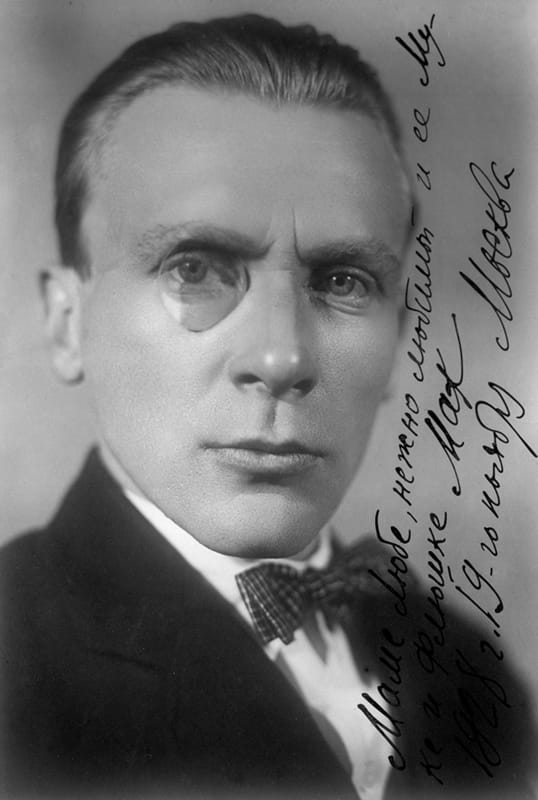
The assumption that Ilf and Petrov could not have been familiar with “Zoyka’s Apartment” is based on the fact that they did not go to the theaters. The source of this statement is the memoirs of the same Valentin Kataev, who contrasts the lifestyle of Bulgakov and the Kataev company: “He was somewhat older than all of us, the characters in this essay of mine, the then Gudkovites, and differed favorably from us in that he was a positive, family man, with principles, while we were the most desperate bohemians, nihilists, resolutely denied everything that had any connection with the pre-revolutionary world, starting with the Wanderers and ending with the Art Theater, which we despised to such an extent that, having arrived in Moscow, we not only never visited it, but even had no idea where it was located, on what street.” But in the next sentence Kataev writes: “In the field of art, there were only two authorities for us: the Commander and Meyerhold.” The commander is Mayakovsky, and the mention of Vsevolod Meyerhold calls into question the dislike of the Kataevs and Ilf for the theater as such.
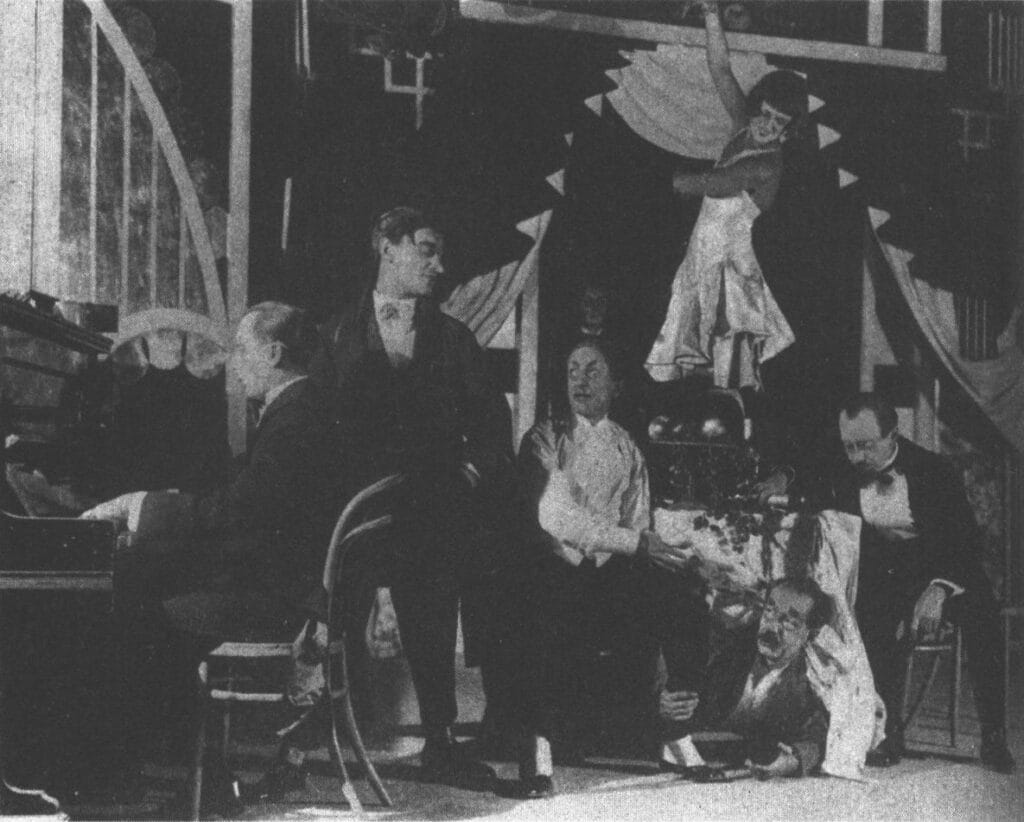
In addition, to become familiar with Bulgakov’s texts, his friends did not have to go to the theater or read them in printed form. Kataev remembers: “Bulgakov sometimes read his works to us - no longer feuilletons, but excerpts from a novel. I remember how one fine day he told us: “You know what, comrades, I’m writing a novel, and if you don’t mind, I’ll read a few pages.” And he read us several excerpts of a very well-written, lively, vibrant work, which then gradually turned into the novel “The White Guard.” About such literary evenings remembered and Bulgakov's wife, Lyubov Belozerskaya. Thus, it is quite likely that for the first time Ilf and Petrov could get acquainted with “Zoyka’s Apartment” not even in the theater, but at Bulgakov’s home. In addition, in 1926 they all worked together at the Gudok newspaper and, as Valentin Kataev testifies, competed in wit and exchanged observations.
The fourth argument is the absence of any direct indications or even hints about the problem of the authorship of “The Twelve Chairs” in Mikhail Bulgakov’s circle. During his lifetime, he was almost never published, his plays were banned, and the main novel of his life, “The Master and Margarita,” from afar 26 years after the writer's death. At that time, “The Twelve Chairs” was translated into foreign languages and republished several times. But Bulgakov's biographers who studied in detail the writer’s archives do not write anything about his involvement in the creation of the novel about Ostap Bender.
In 1927, when The Twelve Chairs were created, Bulgakov was married to Lyubov Belozerskaya. She left detailed memories about this period of his life, and in them there is also not a word about Bulgakov’s secret authorship. The writer's third wife, Elena Sergeevna Bulgakova (Shilovskaya), preserved all of Bulgakov's archives and was always jealous of literary criticism addressed to her husband, whom they refused to publish. But also in her diary there is not a hint of stolen authorship of the popular novel.
Thus, the theory that “The Twelve Chairs” was written by Bulgakov, and not by Ilf and Petrov, is not confirmed either textologically, or from the point of view of the writers’ biography, or by the literary context. The evidence provided by the author and supporters of the theory is based on indirect coincidences and conspiracy theories. In addition, the credibility of Irina Amlinsky’s arguments is undermined by her current commitment conspiracy theories - for example, about psychotropic weapons, which the “world elite” allegedly used in Ukraine, adding to drinking water.
Cover photo: Ilf and Petrov at work, 1932. Eliazar Langman / Wikimedia Commons
Not true
- Is it true that “Quiet Don” was not written by Sholokhov?
- Is the mystical story about the correspondence of the writer Yevgeny Petrov true?
- Is it true that Mikhail Bulgakov called the Russians “a wild horde of murderers and villains”?
- Is it true that Dumas the Father is Pushkin who faked his death?
- Is it true that “The Tale of Igor’s Campaign” is a fake from the late 18th century?
If you find a spelling or grammatical error, please let us know by highlighting the error text and clicking Ctrl+Enter.


